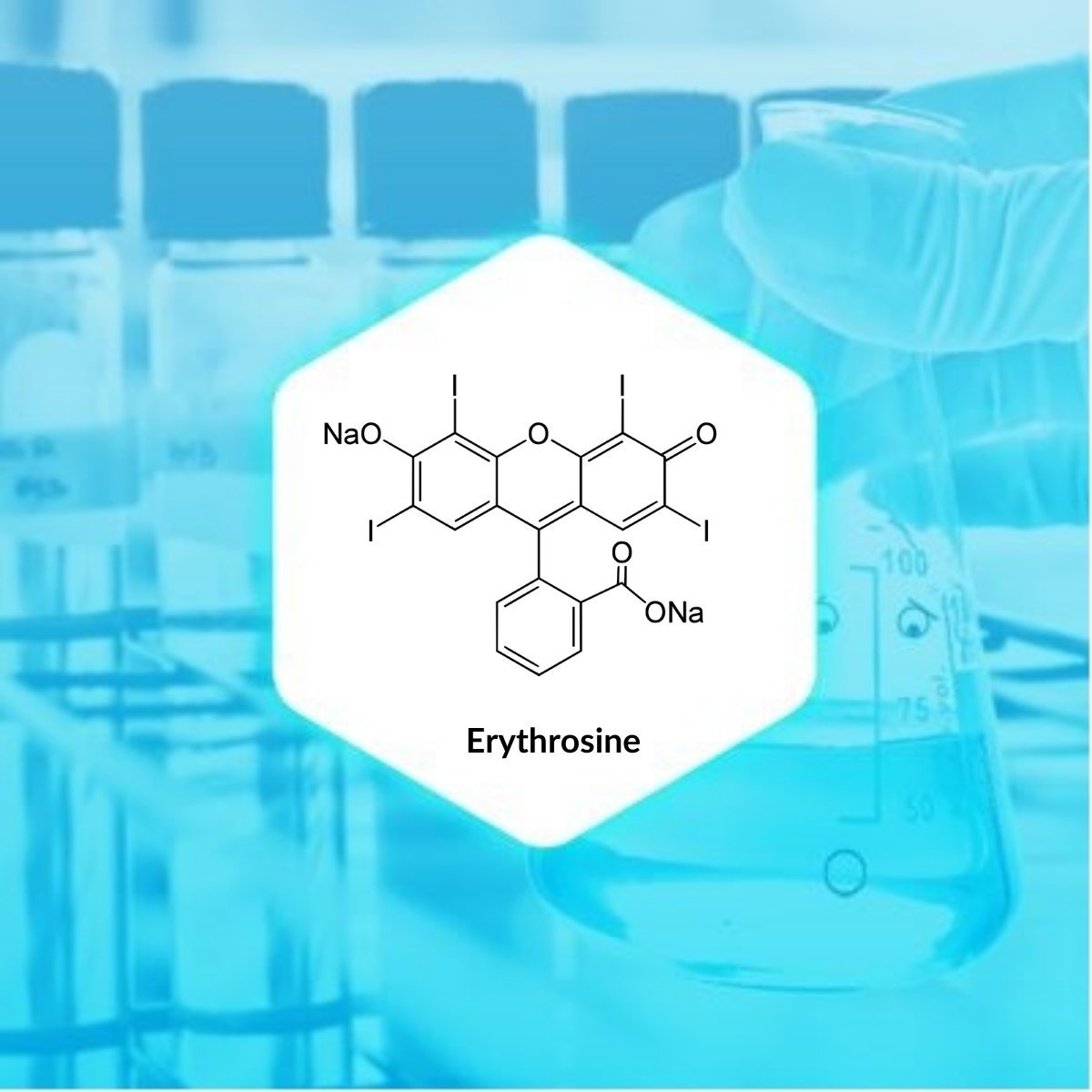
Home » speciality Dyes and Biological Stains » Erythrosine B
What is Erythrosine
Erythrosine B also commonly referred to as Erythrosine or Red No. 3 is an organoiodine chemical that is a fluorone derivative. It is the disodium salt of 2,4,5,7-tetraiodofluorescein. It occurs as powder or granules and is red to orange in color. Its maximum absorbance is at 530 nm. It is used as a red coloring in some foods (as a food additive, it has the E number E127), as disclosure of dental plaque, and as a stain of some cell types.
| PROPERTIES OF ERYTHROSINE | |
|---|---|
| PRODUCT NAME | ERYTHROSINE B |
| SYNONYMS | FD & C Red 3, Acid Red 51; Food Red No. 3; Tetraiodofluorescein Sodium Salt; Aizen Erythrosine; Calcoid Erythrosine N |
| CAS No | 16423-68-0 |
| Color Index No | 45430 |
| Molecular Formula | C20H6I4Na2O5 |
| Molecular Weight | 879.9 g/mol |
| Melting point | 142 to 144 °C |
| Pubchem CID | 12961638 |
| Pubchem SID | 462770364 |
TECHNICAL SPECIFICATIONS
| SR. No | Criteria | Limit/Specification |
|---|---|---|
| 1 | Appearance (Color) | Orange to Red-Orange Powder |
| 2 | Solubility (Color)
(1mg/ml 1M NH4OH) Solubility (Color) |
Clear Orange to Red |
| 3 | Infrared spectrum | Conforms to Structure |
| 4 | Wavelength Extinction Coefficient |
526 - 534 nm ≥102000 |
| 5 | Wavelength Extinction Coefficient |
310 - 318 nm ≥13000 |
| 6 | Wavelength Extinction Coefficient (C = 0.005g/l, Methanol) |
258 - 266 nm ≥32000 |
| 7 | Elemental Analysis Carbon |
27.3 - 30.2 % |
Uses
Erythrosine is used as following:
- Food colorant in sweets such as some candies and popsicles, and in cake-decorating gels
- Printing ink
- In microscopy, erythrosine is often used as a counterstain for visualizing proteins, connective tissues, fibres and keratin in sample material of human origin.
- Dental plaque disclosing agent
- Radiopaque medium
- Sensitizer for orthochromatic photographic films
- Visible light photoredox catalyst
- In the US, erythrosine is known as F&DC Red No. 3 and is approved by the Food and Drug Administration for use as a food coloring and in ingested drugs.
- In the UK, erythrosine is known as E127 and is used to provide the red color in the coating of some tablets and it is limited to use in “cocktail cherries, candied cherries, bigarreaux cherries in syrup and cocktails.”
Side effects
A 1990 study concluded that “chronic erythrosine ingestion may promote thyroid tumour formation in rats via chronic stimulation of the thyroid by TSH”. Based on this research, the FDA issued a partial ban on erythrosine in 1990 but later removed the ban. There are no known negative effects of this chemical.
FAQs
Q. Who manufactures Erythrosine B?
Macsen Lab is the leading manufacturer and supplier of Erythrosine.
Q. Is Erythrosine an artificial food dye?
Yes, Erythrosine is an artificial food colour/dye.
Q. Is Erythrosine water soluble?
Erythrosine has a solubility of 100g/L in water.
Q. Is Erythrosine safe?
Erythrosine has a negligible impact on people, and there is no evidence to suggest that low- or moderate-level exposure to it increases the risk of cancer.
Resources
Food Dyes | An overview of all the dyes currently used in Food
Biological Stains | Classification, Examples & Uses
